|
|
ISLA SAN GIORGIO (VENECIA)=GEORGE LEMAITRE
GEMATRIA EN INGLES DE SEED=33
GEMATRIA EN INGLES DE GATE=33
SARA (CE-SAREA DE FILIPO)=PARALELO 33
|
|
|
|
|

Jordan River (Utah)
From Wikipedia, the free encyclopedia
The Jordan River, in the state of Utah, United States, is a river about 51 miles (82 km) long. Regulated by pumps at its headwaters at Utah Lake, it flows northward through the Salt Lake Valley and empties into the Great Salt Lake. Four of Utah's six largest cities border the river: Salt Lake City, West Valley City, West Jordan, and Sandy. More than a million people live in the Jordan Subbasin, part of the Jordan River watershed that lies within Salt Lake and Utah counties. During the Pleistocene, the area was part of Lake Bonneville.
Members of the Desert Archaic Culture were the earliest known inhabitants of the region; an archaeological site found along the river dates back 3,000 years. Mormon pioneers led by Brigham Young were the first European American settlers, arriving in July 1847 and establishing farms and settlements along the river and its tributaries. The growing population, needing water for drinking, irrigation, and industrial use in an arid climate, dug ditches and canals, built dams, and installed pumps to create a highly regulated river.
Although the Jordan was originally a cold-water fishery with 13 native species, including Bonneville cutthroat trout, it has become a warm-water fishery where the common carp is most abundant. It was heavily polluted for many years by raw sewage, agricultural runoff, and mining wastes. In the 1960s, sewage treatment removed many pollutants. In the 21st century, pollution is further limited by the Clean Water Act, and, in some cases, the Superfund program. Once the home of bighorn sheep and beaver, the contemporary river is frequented by raccoons, red foxes, and domestic pets. It is an important avian resource, as are the Great Salt Lake and Utah Lake, visited by more than 200 bird species.
Big Cottonwood, Little Cottonwood, Red Butte, Mill, Parley's, and City creeks, as well as smaller streams like Willow Creek at Draper, Utah, flow through the sub-basin. The Jordan River Parkway along the river includes natural areas, botanical gardens, golf courses, and a 40-mile (64 km) bicycle and pedestrian trail, completed in 2017.[6]
The Jordan River is Utah Lake's only outflow. It originates at the northern end of the lake between the cities of Lehi and Saratoga Springs. It then meanders north through the north end of Utah Valley for approximately 8 miles (13 km) until it passes through a gorge in the Traverse Mountains, known as the Jordan Narrows. The Utah National Guard base at Camp Williams lies on the western side of the river through much of the Jordan Narrows.[7][8] The Turner Dam, located 41.8 miles (67.3 km) from the river's mouth (or at river mile 41.8) and within the boundaries of the Jordan Narrows, is the first of two dams of the Jordan River. Turner Dam diverts the water to the right or easterly into the East Jordan Canal and to the left or westerly toward the Utah and Salt Lake Canal. Two pumping stations situated next to Turner Dam divert water to the west into the Provo Reservoir Canal, Utah Lake Distribution Canal, and Jacob-Welby Canal. The Provo Reservoir Canal runs north through Salt Lake County, Jacob-Welby runs south through Utah County. The Utah Lake Distribution Canal runs both north and south, eventually leading back into Utah Lake.[9] Outside the narrows, the river reaches the second dam, known as Joint Dam, which is 39.9 miles (64.2 km) from the river's mouth. Joint Dam diverts water to the east for the Jordan and Salt Lake City Canal and to the west for the South Jordan Canal.[10][11][12]
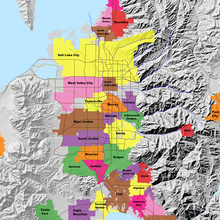
Map of the Salt Lake Valley
The river then flows through the middle of the Salt Lake Valley, initially moving through the city of Bluffdale and then forming the border between the cities of Riverton and Draper.[7] The river then enters the city of South Jordan where it merges with Midas Creek from the west. Upon leaving South Jordan, the river forms the border between the cities of West Jordan on the west and Sandy and Midvale on the east. From the west, Bingham Creek enters West Jordan. Dry Creek, an eastern tributary, combines with the main river in Sandy. The river then forms the border between the cities of Taylorsville and West Valley City on the west and Murray and South Salt Lake on the east. The river flows underneath Interstate 215 in Murray. Little and Big Cottonwood Creeks enter from the east in Murray, 21.7 miles (34.9 km) and 20.6 miles (33.2 km) from the mouth respectively. Mill Creek enters on the east in South Salt Lake, 17.3 miles (27.8 km) from the mouth. The river runs through the middle of Salt Lake City, where the river travels underneath Interstate 80 a mile west of downtown Salt Lake City and again underneath Interstate 215 in the northern portion of Salt Lake City. Interstate 15 parallels the river's eastern flank throughout Salt Lake County. At 16 miles (26 km) from the mouth, the river enters the Surplus Canal channel. The Jordan River physically diverts from the Surplus Canal through four gates and heads north with the Surplus Canal heading northwest. Parley's, Emigration, and Red Butte Creeks converge from the east through an underground pipe, 14.2 miles (22.9 km) from the mouth.[7] City Creek also enters via an underground pipe, 11.5 miles (18.5 km) from the river's mouth. The length of the river and the elevation of its mouth varies year to year depending on the fluctuations of the Great Salt Lake caused by weather conditions. The lake has an average elevation of 4,200 feet (1,300 m) which can deviate by 10 feet (3.0 m).[3] The Jordan River then continues for 9 to 12 miles (14 to 19 km) with Salt Lake County on the west and North Salt Lake and Davis County on the east until it empties into the Great Salt Lake.[7][8][11]
Discharge[edit]
The United States Geological Survey maintains a stream gauge in Salt Lake City that shows annual runoff from the period 1980–2003 is just over 150,000 acre-feet (190,000,000 m3) per year or 100 percent of the total 800,000 acre-feet (990,000,000 m3) of water entering the Jordan River from all sources. The Surplus Canal carries almost 60 percent of the water into the Great Salt Lake, with various irrigation canals responsible for the rest. The amount of water entering the Jordan River from Utah Lake is just over 400,000 acre-feet (490,000,000 m3) per year. Inflow from the 11 largest streams feeding the Jordan River, sewage treatment plants, and groundwater each account for approximately 15 percent of water entering the river.[13]
Watershed[edit]
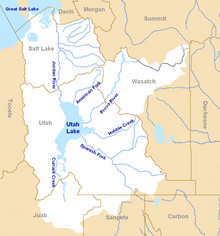
Map of the entire Jordan River Basin
|
|
|
|
|

 
Source: Facts.net
Welcome to our daily historical journey! In this article, we will explore the intriguing events and interesting facts that occurred on September 27th throughout history. It’s fascinating to delve into the past and uncover the significant milestones, memorable moments, and noteworthy achievements that shape our world today. From groundbreaking discoveries and technological advancements to political events and cultural milestones, September 27th has proven to be a day of great importance. This day holds a treasure trove of historical significance, and by exploring the events that unfolded on this date, we gain a deeper understanding of our collective past. So, join us as we embark on a captivating journey through time to discover all the facts and events that have taken place on September 27th in history.
HISTORICAL EVENTS
-
1954: The U.S. Army opens the first nuclear power station at Shippingport, Pennsylvania.
-
1964: The Warren Commission releases its report, concluding that Lee Harvey Oswald acted alone in the assassination of President John F. Kennedy.
-
1996: Taliban forces seize control of Kabul, the capital of Afghanistan.
-
2008: SpaceX launches the Falcon 1, becoming the first privately-funded liquid-fueled rocket to reach orbit.
-
2014: Hong Kong pro-democracy protests, also known as the “Umbrella Movement,” begin after China announces plans for strict control over Hong Kong’s elections.
SCIENTIFIC BREAKTHROUGHS
-
1825: George Stephenson successfully operates the first practical steam locomotive, the “Locomotion No. 1,” on the Stockton and Darlington Railway in England.
-
1942: The first successful controlled nuclear chain reaction is achieved by a team led by Enrico Fermi at the University of Chicago.
-
1998: The first robotic mission to Mars, NASA’s Mars Pathfinder, deploys the Sojourner rover and begins transmitting valuable scientific data back to Earth.
-
2007: NASA’s Dawn spacecraft is launched, embarking on a mission to study the protoplanet Vesta and the dwarf planet Ceres.
-
2015: Scientists announce the discovery of liquid water on Mars, raising the possibility of potential microbial life on the planet.
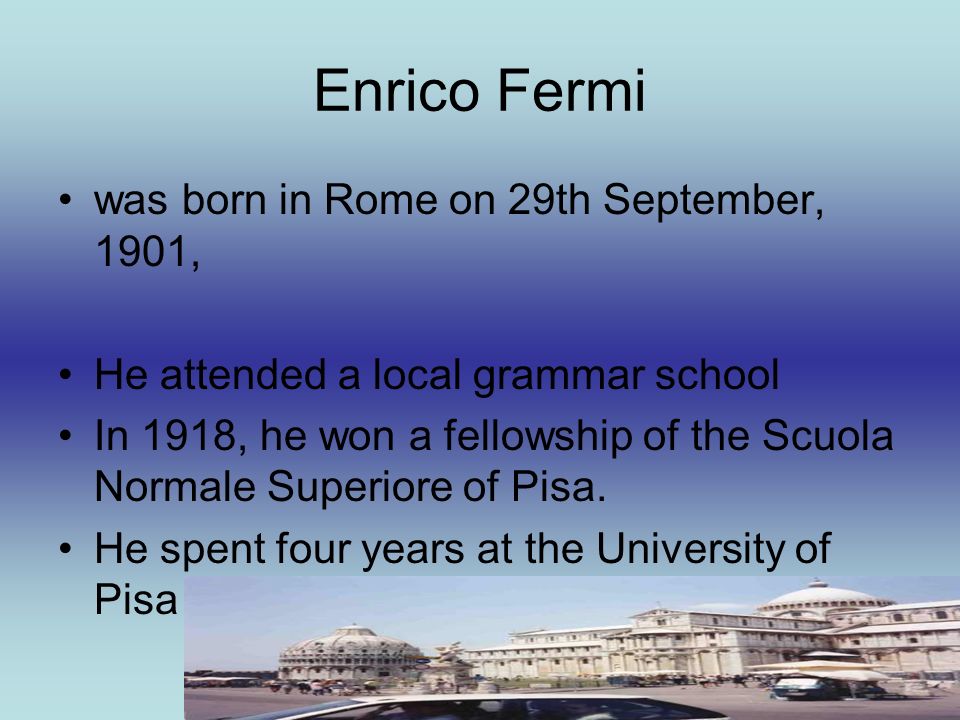 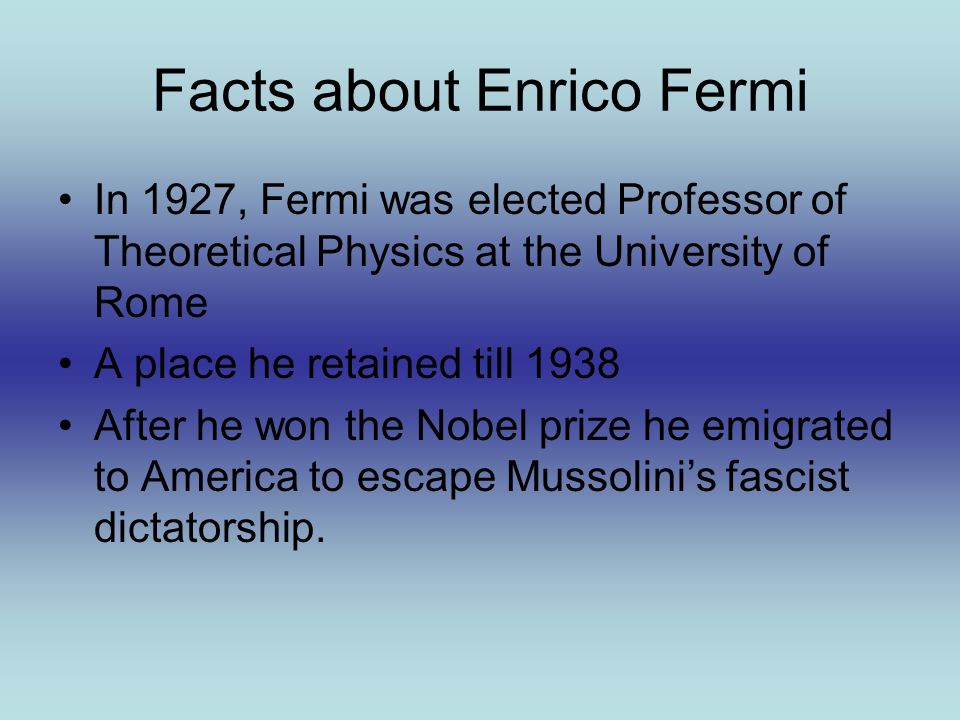 Enrico Fermi, Italian-American physicist, received the 1938 Nobel Prize in physics for identifying new elements and discovering nuclear reactions by his method of nuclear irradiation and bombardment. He was born in Rome, Italy, on September 29, 1901, and died in Chicago, Illinois, on November 28, 1954.
|
|
|
|
|
ISLA SAN GIORGIO (VENECIA)=GEORGE LEMAITRE
Just after midday on July 22, 1946, Zionist terrorists, under the leadership of Menachem Begin, set the fuses on bombs planted in the basement of the King David Hotel in Jerusalem. At 12:37 a huge explosion ripped through the building, killing 91 people. Among the dead were 25 Britons, 41 Arabs, and 17 Jews.
|
|
|
|
|
“The city of birth will be as much a unique part of your life as your descent from your mother.”
Albert Einstein, 1929
ALBERT EINSTEIN IN ULM, 1879 – 1880
Hermann Einstein (1847-1902), born in Buchau on the Federsee and merchant in Ulm, married 18 year-old Pauline Koch (1858-1920) from Cannstatt, the daughter of a purveyor to the royal household and corn-merchant in Stuttgart, on August 8, 1876. At first Hermann Einstein and his young wife lived at the “Suedlicher Muensterplatz” in Ulm. He was the joint owner of a company trading with feather-beddings at Weinhof A 90 (“Zum Engländer”, later renamed to Weinhof 19). Ulm was then a soaring town of some 33000 inhabitants with two percent among them being Jews. The Einsteins, also being of Jewish ancestry, participated in the religious life of the Jewish community. In 1878/79 Hermann Einstein and his pregnant wife moved to a new and larger residence at Bahnhofstrasse B 135 (in 1880 renamed to Bahnhofstrasse 20) in Ulm.
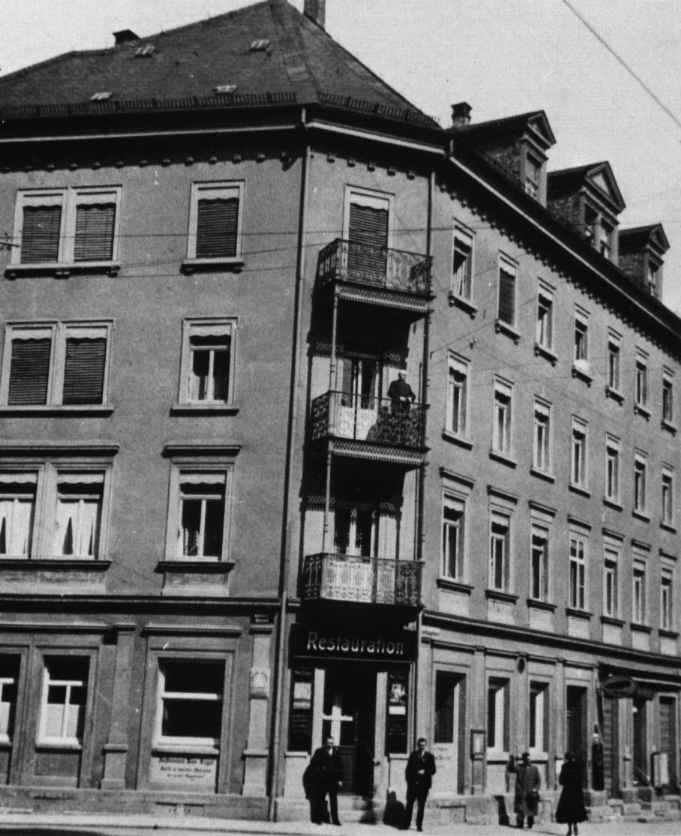 1 The house where Einstein was born
Einstein’s birth-place
About his birth-place in the Bahnhofstrasse 20, in a letter to Carlos Erlanger, son of the house-owner at that time, Einstein wrote in April 1929: “To be born the house is quite nice because on this occasion one does not yet have major aesthetic needs; instead one cries at his beloved ones without worrying much about reasons and conditions.”
The house, erected in 1871, was destroyed in December 1944 during one of the heaviest bombardments of Ulm. Einstein did not have any special relation to his birth-place. When he was shown a photo of his destroyed birth-place he wrote in his reply: “Time has affected it even much more than it has affected me.”
On March 14, 1879, a Friday, Pauline Einstein gave birth to her first child, a boy, in their residence in the Bahnhofstrasse. On the following day Hermann Einstein registered his son at the registry office in Ulm with the name Albert.
As the back of the head seemed much too big, the family initially considered a monstrosity. The physician, however, was able to calm them down and some weeks later the shape of the head was normal. When Albert’s grandmother saw him for the first time she is reported to have muttered continuously “Much too fat, much too fat!” Contrasting all apprehensions Albert grew and developed normally except that he seemed a bit slow.
Financially Hermann Einstein and his family were able to live a more or less untroubled life in Ulm. However, at the initiative of his younger brother Jakob, Hermann Einstein moved with his wife and the one year old Albert to Munich during the summer of 1880. There Hermann Einstein had the opportunity to become partner of his brother’s company Einstein & Cie. On June 21, 1880 Hermann Einstein registered himself and his family with the police. Thus after only 15 months Albert Einstein’s stay in Ulm had come to an end.
Until the present day it is not entirely clear whether Einstein ever visited his birth-place again. From several surviving letters, however, there is evidence that he might have visited Ulm briefly on passing through.
Ulm and Einstein
In 1920, after Einstein’s achievements had been widely recognized, Ulm also wanted to honour him. Thus, for example, in 1922 the decision was made to name a yet to be constructed street after him. Even though in Nazi-Germany this street was renamed Fichtestrasse (after Johann Gottlieb Fichte, 1762-1814, a German philosopher), it was named Einsteinstrasse again in 1945. On the occasion of his 50th birthday on March 14, 1929, Einstein was informed in a letter of congratulation by the then mayor that the city of Ulm had named a street in his honour. With respect to the Einsteinstrasse Einstein remarked in his reply: “I have already heard about the street named after me. My comforting thought was that I am not responsible for whatever is going to happen there.” Between 1920 and 1929 a lively exchange of notes between Ulm and Albert Einstein developed which, interrupted by the political situation in Germany, was only resumed in 1949.
In 1949 Ulm wanted to grant Einstein the rights of a freeman of the city. Einstein however declined, pointing to the fate of the Jews in Nazi-Germany.
While Einstein was still alive and also after his death in April 1955 several ceremonies and commemoration days were held in his honour.
At present, apart from the above-mentioned Einsteinstrasse, in Ulm you can find a memorial and a memorial tablet in the Bahnhofstrasse. In addition, the building of the “Volkshochschule” (school for adult education) carries the name “EinsteinHaus”. When laying the foundation-stone to the “EinsteinHaus – Haus der Volkshochschule” in January 1966 the nobel laureates Max Born (1882-1970), Otto Hahn (1879-1968) and Werner Heisenberg (1901-1976) were present. Since 1968 there is a permanent photographic exhibition in the first floor of the EinsteinHaus where the life of Albert Einstein is re-traced in a selection of individual photographs, arranged by Professor Hans (Nick) Roericht. Information about this exhibition is available under info@vh-ulm.de.
On the occasion of the 125th birthday of Albert Einstein a ceremonial act took place in the Congress Centre in Ulm on Sunday, March 14, 2004. After the lord mayor Ivo Gönner welcomed the audience, Johannes Rau, the prime minister of Baden-Württemberg Erwin Teufel and the head of the “Deutsche Physikalische Gesellschaft” (German Physical Society), professor Roland Sauerbrey held a speech. The ceremonial speech was held by doctor Albrecht Fölsing. The ceremonial act was musically accompanied by the Philharmonic Orchestra of the city of Ulm under the direction of James Allen Gähres.
The spring congress of the “Deutsche Physikalische Gesellschaft e.V.” (German Physical Society (incorporated society)) took place in Ulm in March. An Einstein opera was played in the “Grosses Haus” (Great House) of the Ulm Theatre from March to May. The cultural highlight of the Einstein year in Ulm, an Einstein exhibition, was presented in the town house on Muensterplatz from March 12 to August 29.
https://einstein-website.de/en/ulm/ |
|
|
 Primeira Primeira
 Anterior
34 a 48 de 63
Seguinte Anterior
34 a 48 de 63
Seguinte Última
Última
|

